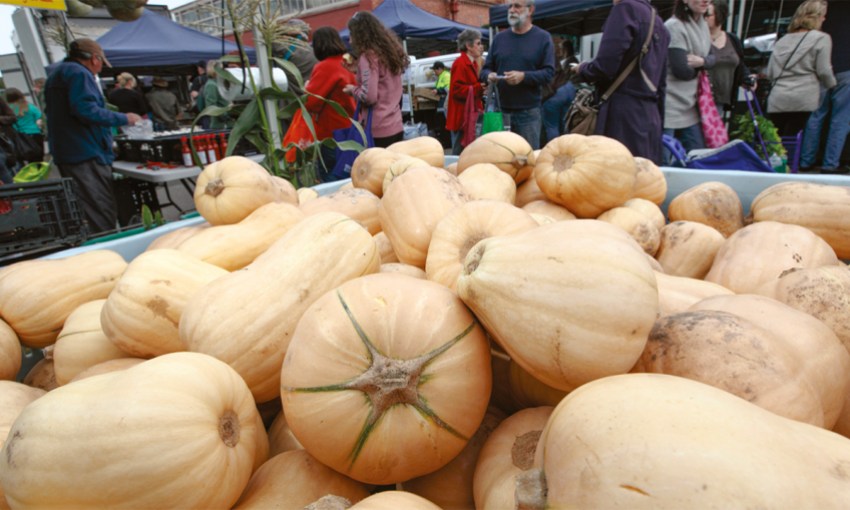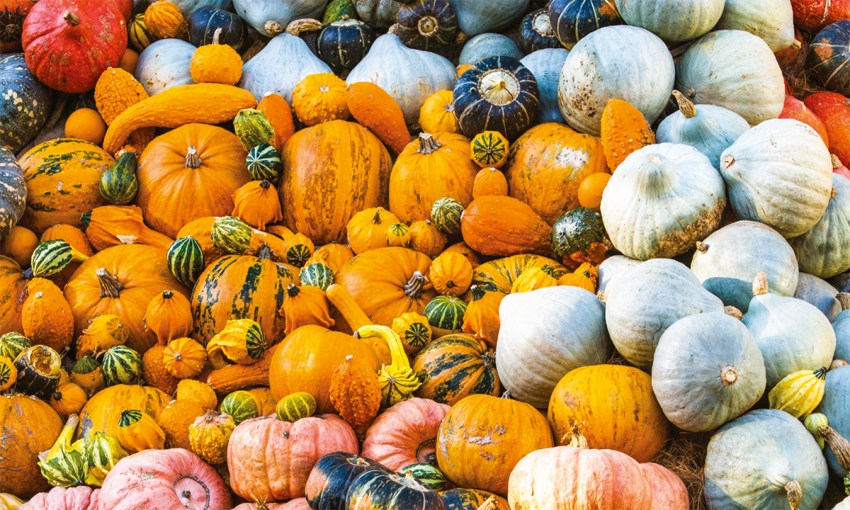If you like to grow plants that seemingly have little boundaries, are adventurous and have you picking fruit in the most unusual places, then pumpkins should most definitely be on your list.
A patch of pumpkins
Originating in the Americas more than 5000 years ago, colonisation led to the introduction of pumpkins into Europe. Subsequent cropping and domestication led to an increase in varieties, size, flavours and colours. When it comes to weight, the world record goes to an Italian-grown pumpkin weighing a whopping 1226kg.
Belonging to the genus Cucurbita, pumpkins are closely related to squash – the most recognised being butternut. Similar in almost every way, the main difference between pumpkin and squash is pumpkin stems are hard and jagged, while squash stems are hollow and smooth.
Pumpkins are also related, although not as closely as squash, to melons, cucumbers, and zucchini.
If you want to grow your own, remember that pumpkins are sun lovers, so pick a spot that gets six hours or more a day. Drainage is important. If you are concerned about potential water-logging, planting in mounds or raised garden beds will sort that out. Alternatively, pumpkins do remarkably well in large containers. Select a pot that takes at least a bag and a half of premium potting mix.
Spend time prepping the ground. Weed control is essential so pull, scrape, chip or spray the space.
Removing weeds reduces competition for water and nutrients and, because pumpkin plants spread, it avoids that unsightly weed and stem tangle. Once that is done, dig in spadefuls of well-aged compost or manures to feed soil microbes.
Spread mulch over the prepared garden bed to reduce evaporation, keep soil temperature and root zones cool, and help suppress weeds. Mulch is also a wonderful soft bed for pumpkin fruit to lay and develop, helping to avoid potential rot via contact with bare soil.
Frost is a pumpkin’s natural enemy, so always wait until after the last frost to plant out. Available as both seedlings and seed, pumpkins grown from seeds are best placed in situ and respond well to the warm soil of late spring and early summer. Plant three to four seeds, let them germinate then remove the weakest two.

There are so many pumpkin varieties to choose from, here are just a few:
Queensland Blue
An Australian and world favourite producing large fruit with a bluish skin. Harvest around 19 weeks from sowing.
Kent
With its grey-green mottled skin and bright yellow flesh, it is flavour-filled and stores well. Sow-to-harvest is approximately 100 days.
Wee B Little
Growing to around 12cm in diameter, ideal on a trellis, perfect for roasting whole and with a 12-week harvest.
Buttercup
Smaller sized fruit with a wonderful nutty flavour. Harvest is approximately 17 weeks.
Atlantic Giant
Looking to go big? Then this is a ripper. Plant it, let it grow and harvest in 70 to 120 days.
Maintaining soil moisture levels is critical as any drying has a major impact on plant growth and fruit development.
Keeping the ground damp but not overly wet is ideal. Deep soaks every two to three days works well. Feeding with fertilisers like Thrive Veggie & Herb, Brunnings Tomato & Vegetable Plant Food, PowerFeed Tomatoes and Vegetables or Gyganic for Veggies, Fruit & Citrus supplies an excellent balance of nutrients and trace elements for flower and growth.
Pumpkins are creepers that like to wander, so give them space. Traditionally planted in the back of yards where they can cover the ground without interruption, they are perfect for adding a rambling look to a veggie patch, as they carefreely stretch across paths and beds. Errant stems can be gently coaxed away from places they shouldn’t and directed into more suitable spots.
If room is a premium, a trellis or fence provide the perfect structures for tendrils to attach and plants to climb. Small trees such as citrus are also favourite frameworks for pumpkins to ascend.
The only issue when pumpkins are grown as a climber is sustaining the heavy fruit. Keen gardeners make up slings from pantyhose then place in the emerging fruit. As the pumpkin’s size and weight increases the sling expands. Smaller sized pumpkins producing lighter fruit are better suited to planting on vertical supports without the need for slings.
Each plant bears separate gender flowers. Female flowers have a bulb at the base as opposed to the male flowers, which have a thin stem below the bloom.
Key to pumpkin harvest is pollination. Busy bees and other insects visiting male flowers, pick up pollen which is transferred to the female flower when that bee or insect drops by. Growing big bloomers like lavender, borage or rosemary will increase your chance of good bee numbers in the yard.
Where bee numbers are low, some human intervention is needed. Grab a small paint brush and rub the bristles inside a male flower picking up pollen, then dab the brush on the centre of a female flower. Repeat across the entire plant.
Pumpkins are ready to pick once the vine leaves begin to dry and wither. Never pull away, always cut the stem about 15cm above the fruit.
This avoids damaging the skin and reducing shelf life. Place the pumpkin on a rack in the sun for a week to allow the skin to harden and ready itself for storage. Pumpkins are brilliant storers and can be kept for up to six months.
This article first appeared in the Summer 2022 issue of SALIFE Gardens & Outdoor Living magazine.



